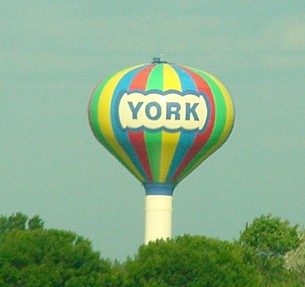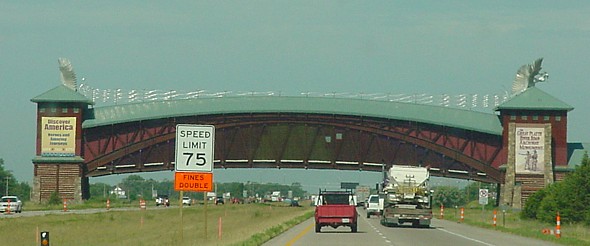Philmont 2004

The buildings of downtown Lincoln swung into view as the van curved along the exit ramp,
heading for Interstate 180. At the centre of it all, the tallest building, was Nebraska's capital.
Unlike the United States capital, with its large dome and squat appearance, and the scores of other state capitols which are based off of it, Nebraska's capital is designed much more like a 1930s office building.
Designed by Bertram Grosvenor Goodhue and built between 1922 and 1932, it is an art deco masterpiece, rising tall and proud 122 metres above Lincoln. At its top is an impressive bronzed statue called "The Sower,"
which was placed there to remind Nebraska's citizens of the state's agricultural beginnings.


Some of the sights we saw along the way.


I had never been to Colorado before, and all I knew about the state was what I had seen on TV,
read in books, or interpreted for myself. I had expected the mountains to greet us at the border,
like a large plateau of rock on top of which the citizens of Colorado lived in a mile-high paradise of pine forests
with all the beer they could drink, according to the Coors commercials, and looked down and laughed at
the people of Nebraska in their dusty wheat fields.
At least that is what I had always expected.
The plains and wheat fields of Nebraska stretched unbroken into Colorado. About eighty kilometres into the state, Michela took off her headphones and said, "Wow, those are weird lookin' clouds." I looked in the direction she was pointing. Off in the distance, a ridge of irregular white shapes stretched across the horizon.
"Those aren't clouds," Veronica said, "they're mountains!"


I had my nose pressed to the window as Denver swung into view. Denver was a beautiful city; a core of stately skyscrapers and lights against a backdrop of burgundy mountains. Our itinerary had us visiting the capital and driving around downtown for a bit, then heading out to Casa Bonita for dinner.
We drove around the block a few times, taking pictures of the capitol from different angles.
There was also a great deal of public art in Denver, distributed liberally in office plazas and on busy street corners. The most striking of these was a red chair, about fifteen feet high, on which stood a tiny brown and white horse (don't ask me why), looking across the street towards the capitol.
Click here to continue the story!
Return to Home Page.






